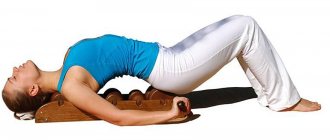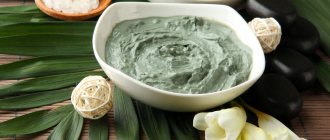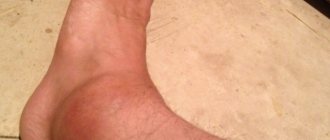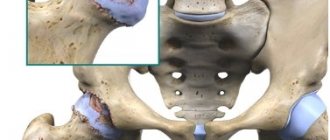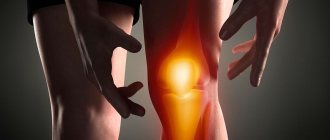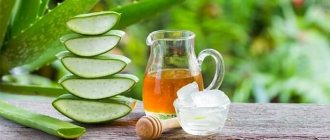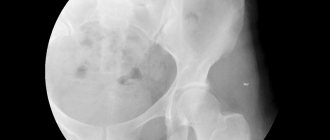Diseases and pain in the back and joints according to Ayurveda
Ayurveda divides back pain into two types. The first is those diseases that are associated with a lack of nutritional components in the joints or bone tissue, which causes their low density. The first signs of an emerging problem: crunching and discomfort, which can develop into limited mobility. The second type is pain caused by the accumulation of toxins not only in the joints, but throughout the entire body. The accumulation of ama causes pain and swelling.
Ayurveda for joints uses a whole range of effective practices that can cure:
- osteochondrosis;
- cervical spondylosis;
- arthrosis;
- atritis;
- radiculitis.
Ayurveda, the back is a vulnerable spot in people with sedentary work or activities associated with constant tension in the spinal muscles. Ayurvedic methods are effective for problems such as:
- protrusion;
- intervertebral disc prolapse;
- hernias;
- hemiplegia;
- cervical or lumbar spondylosis;
- degenerative diseases.
Occurrence and treatment of osteochondrosis with Ayurveda
Ayurveda eliminates osteochondrosis using a set of procedures, which also includes different types of massage. They are aimed at preventing cartilage and spinal degeneration. These methods relieve muscle tension.
The main reason for this problem is a sedentary lifestyle or, conversely, excessive stress on the body and the back in particular. Back pain is most often observed due to Vata imbalance.
The spine is the core of the whole body; not only posture, but also facial expressions, harmonious voice and clarity of mind depend on its health.
Ayurveda also treats osteochondrosis with the help of herbal decoctions, healing powders, and steam. These procedures remove toxins from the body, eradicating the original source of the disease.
Joint pain according to Ayurveda due to weather or toxins
Ayurveda characterizes joint pain as a feeling of heaviness and tightness. These are the first symptoms, and if they are ignored, ama in the joints is transformed into amavisha (that is, from ordinary toxins it is converted into poisonous waste). It provokes inflammation, swelling and severe pain.
Initially, joint problems may occur due to a cold or wet weather. The second reason is the accumulation of toxins. They enter the body with poor-quality food and penetrate all tissues. Toxins mix with the joint fluid, forming a sticky substance that limits joint mobility, preventing normal blood supply.
Ayurveda and treatment of diseases. Arthritis
Ayurveda and treatment of diseases. Arthritis
Arthritis is one of the most common chronic degenerative diseases. However, modern medicine has little to offer for its treatment, except, perhaps, aspirin. In Ayurveda, arthritis is called "amavata", that is, a toxic condition of air. This is typically a vata disorder, accompanied by pain and weakening of the bone tissue, the tissue associated with vata. Arthritis can be divided into types or stages according to the three doshas.
The occurrence of arthritis can be caused by both internal and external factors. Arthritis is especially common in areas where it is windy, humid, and stormy. Arthritis is caused by decreased levels of agni in the body and poor digestion, leading to the accumulation of ama (toxins). Dysfunction of the large intestine leads to toxins entering the joints. Arthritis can also be caused by traumatic injuries or autoimmune disorders, in which the body seems to attack itself.
General principles for treating arthritis First of all, it is necessary to restore the digestive fire and burn off the toxins accumulated in the body. Short fasting or hot spices are useful: red pepper, cinnamon, dry ginger, galangal. You can use hot energy gemstones, such as ruby or garnet, set in gold. However, if you have a fever or signs of inflammation, you should be careful in their use. Wet, heavy, ama-producing foods should be avoided and eating should be regular.
Methods of diaphoretic therapy - a sauna or a steam chamber - work well. In the latter case, a hose (nadi swede) is connected to the top of the cauldron in which special herbs or the dashamul composition are boiled and thus directs the steam to those areas of the body that need to be treated. Use diaphoretic herbs: ephedra, angelica, nirgundi, bay leaf or eucalyptus leaf.
To cleanse the colon, do enemas with dashamula decoction or take triphala composition daily.
Valuable Ayurvedic antirheumatic herbs include: guggul, turmeric, musta, galangal, nirgundi and prasarini. The most specific remedy that cleanses and strengthens bone tissue and improves joint mobility is guggul. Musta, a plant also known in Chinese medicine, is now widely used to relieve pain in joints and muscles, in particular muscle contractures. Prasarini and nirgundi have a good analgesic effect for rheumatic pain. In addition, prasarini is also used to relieve abdominal pain, and nirgundi has a pronounced anti-inflammatory effect.
Of the Ayurvedic preparations, the most effective are triphala guggul ( Triphala Guggul ), yogaraj guggul ( Yogoraj Guggul ) and mahayogaraj guggul ( Mahayogaraj guggul ) (the latter two contain special minerals). However, recent clinical studies conducted in India have shown that guggul in large doses (about 6 g per day) by itself is no less effective than complex formulations based on it.
A good preparation can be prepared from herbs known in the West: angelica, hoofed grass, cinnamon and licorice, taken in equal parts. Take it in the form of infusion or powder, 1 tsp. with honey (the cleansing properties of honey are more pronounced than those of sugar, milk or ghee). This composition is quite effective in the initial stages of arthritis and in vata or kapha constitutions. For conditions associated mainly with pitta or accompanied by an inflammatory process, one or two bitter herbs (barberry, golden seal or katuka) should be added to it.
Among the herbs used in Chinese medicine are du huo, kiang huo, chuang xiong, gentian macrofolia and eleutherococcus. Chuan xion is preferred as an anesthetic; Eleutherococcus is used for chronic and degenerative arthritis.
Western herbal medicine also includes myrrh, chaparrel and yucca.
Medicinal sesame oils for arthritis When used externally, medicinal oils relieve joint stiffness, remove toxins, nourish tissues and reduce pain. In this regard, special Ayurvedic oils based on sesame are especially good.
Mahanarayana Thailam oil, the main component of which is shatavari, reduces stiffness in joints, increases their mobility and relieves pain. It nourishes the skin, helps with muscle fatigue and varicose veins, so it can be successfully used by dancers and athletes. Narayan oil, which contains ashwagandha, helps with muscle and joint pain, improves blood circulation in the legs and slows down the aging process. Sahacharaada Thailam oil (based on the sahachara herb) is used as a special remedy in the treatment of rheumatoid arthritis and also helps with muscle atrophy and degeneration of nerve tissue. A light massage using these oils should be performed daily. Chandanbalalakshadi oil, the main component of which is sandalwood, has cooling properties and is good for pitta-type arthritis.
In the absence of these oils, use warm sesame oil (Virgin sesame oil). You can make your own medicinal oils by boiling the appropriate herbs in sesame oil.
Essential oils from camphor, mint, and wintergreen are good for external use. They are dissolved in alcohol or together with tonic herbs, such as Ashwagandha ( Ashvagandha) , used in the preparation of medicinal oils based on sesame oil. Containing methyl salicylate, wintergreen can be used for pain as a substitute for aspirin.
Peculiarities of manifestation (types) of arthritis In vata-type arthritis, the pain is stronger, can be changeable, migrating, pulsating or cutting, weakened in warmth, intensified in cold. The skin is dry or flaky, the joints become stiff and creak, and movement is difficult. With this type of arthritis, bone deformation is more often observed, there may be constipation, flatulence, and pain in the lower back. As a rule, insomnia, nervousness, anxiety, and fears are noted.
Pitta arthritis causes more inflammation with swelling, fever, or a burning sensation. The pain is relieved by cold and worsened by warmth. Sweating, irritability, and a tendency to loose stools are also noted.
With kapha-type arthritis, swelling and swelling in the joint area are more pronounced. The pain is localized, dull, but prolonged and debilitating, relieved by warmth, intensified by cold and damp weather. The skin is oily. There may be a feeling of chest congestion. There is mucus in the stool.
Differentiated treatment of arthritis When treating vata-type arthritis, along with general approaches, a detoxifying diet is provided to reduce vata and eliminate ama. The main medicines are guggul ( Shuddha guggulu) and sesame oil (Virgin sesame oil). Galangal is used as a special herb to treat this type of arthritis. For degenerative and atrophic processes in bone tissue, tonic herbs such as ashwagandha are needed, but care must be taken that tonics, due to their heavy nature, do not increase the formation of toxins from undigested food. The colon is cleansed using castor oil or a triphala compound ( Triphala Guggul ).
Pitta-type arthritis requires bitter herbs along with a pitta-reducing diet. Sandalwood oil or paste, coconut oil or Brahmi oil (Brahmi tailam oil) are applied to the joints. Cold lotions and ice compresses are helpful. Good for oral administration are guggul ( Shuddha guggulu ), sandalwood, guduchi ( Guduchi ), aloe, margosa ( Neem) , turmeric ( Haridra Himalaya ), saffron and other bitter antirheumatic herbs, for example chaparrel.
To treat kapha-type arthritis, hot spices are used: cinnamon, ginger ( Sunthi Himalaya ), mustard, red pepper, turmeric ( Haridra Himalaya ), trikatu composition (Trikatu) . Mustard, red pepper and ginger can also be used externally - in the form of paste, patches or alcohol rubbing. Dry massage with calamus powder helps a lot. Mustard oil with the addition of red pepper is also used externally. Sugar, dairy products and oily foods are strictly contraindicated.
Massage oils used to treat arthritis:
Ayurveda and treatment of diseases. Arthritis
Ayurveda procedures for joints and spine
advises initially maintaining the spine and joints Because if ama, amavisha and shleshma (that same sticky liquid) linger in the joints for a long time, bone tissue is destroyed. Such serious changes are difficult to treat. Use simple preventive measures:
- A “warm” diet consisting of light foods that are dry in nature. These are vegetables with spices that stimulate digestion, nutritious soups, and freshly prepared porridges.
- Sleeping mode. Daytime sleep is harmful for normal digestion. Ayurvedic doctors recommend going to bed early and getting up no later than six o'clock in the morning.
- Daily exercise. Make it a habit to do brisk walking or yoga for at least half an hour a day. People who are dominated by kapha dosha benefit from vigorous exercise.
- Maintaining water balance. You need to drink enough water throughout the day so that toxins do not remain in the body, but are eliminated naturally. You can add some spices to the liquid that stimulate cleansing (cumin, ginger root, black pepper, mint, fennel seeds).
Back treatment with Ayurveda requires a comprehensive approach, as well as the patience and effort of the patient. In addition to physical exercise, he will have to change his usual diet to a vegetarian one in order to relieve the internal organs and remove toxins from the body, which become the cause of all diseases.
Ayurveda treatment of joints
Ayurveda treats joint diseases of varying degrees: from the initial stages to advanced conditions. The procedures of Indian medicine are highly effective where the methods of Western doctors are powerless. Main methods of treatment:
- Merudandavasti is a therapeutic procedure designed to relieve acute back pain. It is an internal cleansing of the spine, which is achieved through special massages with Ayurvedic oils and a steam bath.
- Nadi sweda is local steaming of body parts. Hot steam is supplied through a rubber tube and directed to the affected area. The procedure is reminiscent of modern physiotherapeutic heating, but has a better effect due to the use of herbal decoction and medicinal oils.
- Aavikizhi is a method that has not lost its effectiveness and relevance since ancient times. It consists in the fact that the doctor acts on the affected area with heated cotton or linen bags in which medicinal herbs are wrapped. This massage practice relaxes muscles, triggers metabolic processes and improves lymph and blood circulation, thereby moisturizing the skin and increasing muscle tone.
- Upankham is one of the types of bandage. A bandage with a paste prepared from healing herbs, rock salt and medicinal oil is applied to the affected area. Ayurvedic philosophy is that it is forbidden to apply anything to the skin that cannot be put into the mouth, so treatment is carried out exclusively with the help of herbal remedies.
Ayurveda: treatment of arthrosis
The American Rheumatology Association has recognized Indian therapy as completely safe and effective. The effect of a set of treatment procedures is similar to taking medications against arthrosis.
The philosophical movement, which originated in the ancient East, explains in its own way the etiology of inflammatory processes in the joints. According to Ayurveda, the basis of the disease is a violation of the circulation of vital energy Qi, caused by an imbalance in the Vata dosha system (bioenergetic forces). The biological primary element associated with the energies of wind and ether regulates the functional mobility of the body. The inflammatory process occurs due to clogging of energy channels with mucus. Physiologically, this is manifested by the accumulation of toxins in the body.
Negative symptoms of arthrosis
The characteristic features of Vata dosha pathology are presented in the table:
| Indicator for evaluation | Arthritis condition |
| Painful sensations | Increase in cold conditions |
| Weakening in warmth | |
| Worsening after exercise | |
| Leather | Dry |
| Blushed | |
| Musculoskeletal system | Reduced functional abilities |
| Crunching noise under active loads | |
| General condition of the body | Nervousness |
| High level of excitability | |
| Panic attacks |
Types of arthrosis
Ayurvedic medicine can restore the functionality of the musculoskeletal system in the following pathologies with different localizations:
This therapy is also effective for spondyloarthrosis.
- gonarthrosis;
- uncovertebral arthrosis;
- coxarthrosis;
- spondyloarthrosis;
- primary polyosteoarthrosis;
- ankle arthrosis;
- osteoarthritis of the fingers;
- arthrosis of the shoulder joints.
Treatment of joints and back with Ayurvedic medicines
Treatment of joints with Ayurveda is an effective way to get rid of debilitating problems without harm to internal organs. During the healing of back diseases, the whole body becomes healthier.
Ayurveda treats the spine with the following drugs:
- Zandu is a balm with an analgesic effect that treats arthrosis, arthritis, rheumatoid pain and even gout.
- Kottakal is a balm made from Kshirabala and Mahanaryan oils. Used in the fight against arthritis.
- Dashamul is a massage oil consisting of ten medicinal herbs that normalize Vata dosha. Returns elasticity to muscles and mobility to joints.
- Manohar Bund is a tablet with herbal ingredients that is prescribed for all diseases caused by increased Vata.
- Musculgard is an ointment that eliminates pain and inflammation in the joints. It is used in the treatment of sprains, spondylosis, lumbago and other diseases.
This is not the entire range of medications that help quickly and effectively eliminate diseases. It is dangerous to self-medicate, because only an experienced Ayurvedic doctor will be able to correctly determine your constitution type and prescribe the optimal duration and depth of treatment.
Types of arthritis according to Ayurveda
There are 3 types of arthritis according to Indian system
So, in the Indian system of medicine, three types of joint arthritis are classified:
- Violation according to Vata Dosha. The patient characterizes the pain as throbbing and moving. More often it manifests itself in areas adjacent to the joint. In cold conditions, the painful sensations become unbearable, and in warm conditions they weaken somewhat. The skin over the affected joint is extremely dry and sometimes peeling. In this case, the mobility of the joint is difficult and limited, with crunching and creaking. Disorders of this Dosha are also characterized by gas formation and pain in the spine. The patient becomes overly nervous, easily excitable, and causeless fears appear. Any intense physical activity significantly increases the pain.
- Violation of Pitta Dosha. The disease is manifested by pronounced swelling, severe inflammation, burning sensation and feverish conditions. In the cold, the intensity of pain decreases, and in a warm atmosphere it increases. Associated symptoms include sweating, diarrhea and irritability.
- Violation of Kapha Dosha. In this case, the disease is characterized by severe swelling around the affected joint. There is also an aching, incessant pain, which worsens in conditions of cold, high humidity and rest. This manifestation decreases only after physical activity and in warmth. The skin over the joint is oily to the touch. This type of arthritis is accompanied by shooting pains in the neck, and it may be difficult for the patient to breathe.
General principles of therapy
Going to the sauna helps to remove toxins more actively
In some cases, it can be difficult to determine the Amavata type, since the patient exhibits features of all types of the disease or the clinical picture is blurred. Here, Ayurveda, when treating arthritis, suggests following the general principles of therapy, which are aimed at burning deposited toxins and normalizing digestion:
- Nutrition. Dry ginger, red pepper, cinnamon and galangal should be regularly added to food. Once a month you should completely stop eating for a day. Completely exclude sweets, flour, and baked goods from your diet.
- Sweatshop therapy. Going to the sauna helps to more actively remove toxins. For a more effective process, you can use nirgundi or ephedra herbs.
- Herbal treatment. Decoctions of turmeric, prasarini, guggul, musta, galangal and nirgundi should be consumed. If the disease has become chronic, then it must be treated with eleutherococcus. At the first stage of the disease, you need to take an infusion of licorice root, angelica, cinnamon and hoofed grass.
- Purgation. It is necessary to undergo cleansing therapy with a special decoction of Dashamula.
For rheumatoid arthritis, Ayurveda recommends the use of natural-based medicines. The most effective are Mahayogaraj Guggul and Triffala Guggul.
Ayurvedic treatment for inflamed joints
After eating, your stomach should feel pleasantly light.
Each type of disease has its own treatment algorithm:
- Vata dosha. In this case, Ayurveda for rheumatoid arthritis involves high-quality detoxification of the intestines and the whole body. Accordingly, therapeutic measures are aimed at harmonizing Vata energy and improving digestive processes:
- Diet. The diet ideally includes light meals and drinks that should be consumed warm. Exclude legumes, heavy grains (corn and barley), tomatoes and eggplants from the menu. Be sure to regularly cleanse the intestines by adding castor oil or Triffal to the enema solution.
- Compresses. Gently rub Mahanarayan oil on swelling and painful areas (except the cervical region). Sprinkle the oiled areas with mustard powder and cover with a damp, warm towel.
- Herbs and Ayurvedic preparations. Drink decoctions that increase tone, based on ashwagandha and galangal. Also take Yogaraj Guggul (1 piece three times a day).
- Yoga. The Forward Bend and Knees to Chest asanas are especially effective.
- Pitta dosha. Here, comprehensive treatment of arthritis according to Ayurveda is aimed at reducing heat, which symbolizes Pitta Dosha. This is achieved by the following methods:
- Diet. Exclude tomatoes, pickled cucumbers (they increase swelling), and greens (in particular, spinach) from the diet. The menu should not contain spicy or hot dishes.
- Compresses. You can reduce pain and remove swelling using ice compresses or lotions based on coconut oil or sandalwood paste.
- Herbs and Ayurvedic preparations. Ayurveda recommends taking saffron, sandalwood, margosa, turmeric, chaparral here; as well as Kayshore Guggul tablets, 1 pc. three times a day and Sudarshan powder also three times a day, 0.5 tsp.
- Yoga. You should regularly perform the “Chandra Namaskar” set of exercises, do the “Boat”, “Camel”, “Grasshopper”, “Cow’s Head” asanas. The general condition is alleviated by breathing exercises, for example, Sitali pranayama.
- Kapha dosha. Here violations indicate problems with water-salt balance. The most important thing here is to remove excess liquid:
- Diet. Completely eliminate sugar, milk and dairy products, fatty and cold foods. Add cinnamon, ginger, turmeric, red pepper to dishes. These spices stimulate Agni, which means they improve digestion.
- Compresses. You can remove excess fluid and relieve swelling using a compress based on dry ground ginger and boergavia.
- Ayurvedic medicines. It is recommended to take Punarnava Guggul tablets three times a day, 1 pc.
- Yoga. The activity of Kapha is reduced by the “Forward Bend”, “Triangle”, “Back Twist”, and “Tree” asanas.
Ayurveda in the treatment of rheumatoid arthritis in Kapha dosha also involves performing a warming massage with mustard oil, vacha powder or red pepper.
